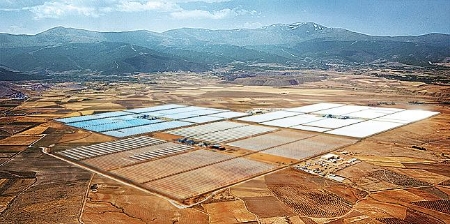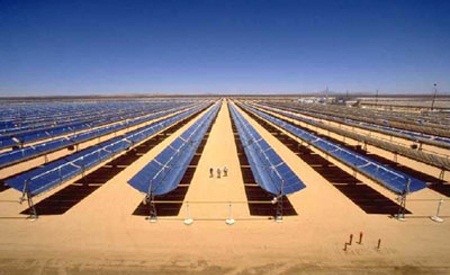There is nothing a president can do to force Congress to pass climate bills, but President Obama has advanced more renewable energy than any other, anyway. The executive branch does have jurisdiction over granting energy leases on 245 million acres of public lands through the cabinet level Department of the Interior’s Bureau of Land Management (BLM) and Obama has made adroit use of this.
For the first time ever, the BLM has approved solar and wind projects on public lands. And it is a staggering amount of energy. Since the beginning of this administration, the BLM has approved a total of 27 utility-scale renewable energy projects amounting to 6.6 gigawatts (GW) of renewable energy on BLM lands: 16 solar projects, four wind farms and seven geothermal plants.

While the 27 projects approved so far, including 19 last year, is astonishing enough, quadrupling the amount of renewable energy ever approved on public lands to 6.6 GW – this year, we could see double the amount of power permitted over the last three years. For 2012 alone, the BLM has targeted an additional 7 GW in 17 projects (nine solar, six wind and two geothermal), bringing the total approvals to 13.6 GW of generating capacity.
This administration’s use of the BLM to advance renewables is unprecedented. Public lands have traditionally been open season for oil and gas leases, not solar or wind leases. In a century or more of public land leases, only 1.8 GW of any renewable energy (mostly geothermal and hydro from long ago) has ever been permitted on BLM land.
This would appear to be an end run around a Congress noted for obstruction, not only of all Democratic legislation, but very particularly, of Democratic renewable energy and climate legislation.
The already-approved 27 projects’ 6.6 GW is enough to power 2.3 million out of the nation’s 102 million households. With the 2012 permits adding up to another 7 GW, the 13.6 GW total could have as much as 5 percent of U.S. households powered with renewable energy from public lands alone. Geothermal projects on BLM land deliver 40 percent of all the geothermal power in the country. Eventually solar and wind on public land could do as well.
The 7 GW-worth of 17 projects to be fast-tracked in 2012 are fewer but larger than those approved to date. One is 2-3 GW all by itself, and will be the largest wind farm in North America. The thousand-turbine wind farm under development by the Power Company of Wyoming at Chokecherry/Sierra Madre will transform some of the best wind resources in the U.S. to 2,000-3,000 MW generating capacity. The BLM expects to issue the project’s final environmental impact statement (EIS) in 2012.
In addition to Power Co’s gigantic wind farm, Shell Wind Energy’s 50-MW Sand Hills Ranch is expected to complete its EIS early this year and Teton Wind’s 360-MW White Mountain wind project near Rock Springs should soon be under construction. Both are also in Wyoming.

Interestingly, this means that half the power (3.4 GW) from all of the new projects is from wind power sited in Wyoming, which has two Republican senators, and only 134,000 recently active voters. This almost seems designed to gradually create a tipping point for renewables in at least one predominantly coal-powered state which has long delivered fossil-fuel-friendly Republican senators to help prevent Senate passage of renewable policies.
The renewable projects approved so far will pay just under $1 billion a year in lease payments to the U.S. Treasury. With 2012 permits as well, that’s likely to double. In addition to lease payments to the feds, the 2-3 GW wind project alone will pay up to $42 million in local property taxes in its first full year of existence, and up to $438 million over 20 years. This sort of revenue begins to create a local constituency for clean power.
Of course, the availability of good wind and solar resources are the primary consideration, along with environmentally sensitive sites being ruled out by the early environmental review. The new approach was developed by working closely with other agencies that also must sign off on renewable projects, including the Bureau of Indian Affairs, the Fish and Wildlife Service and the National Park Service, as well as by coordinating closely with the major environmental groups.
The National Resources Defense Council worked with the Obama administration early on by developing maps of potential environmentally safe sites early on, saving time both for developers, and in the environmental reviews, enabling much more efficient processing of renewable energy applications.
The Obama administration is showing real determination to get the U.S. to a lower carbon footprint, leaving a legacy of clean energy projects that protect us from climate destabilization, even if 2012 does turn out to be the last year in which that can be done. But these new projects cannot help but gradually create a constituency for renewables that may begin to bear fruit after 2012, in Congress, where we need climate legislation passed.